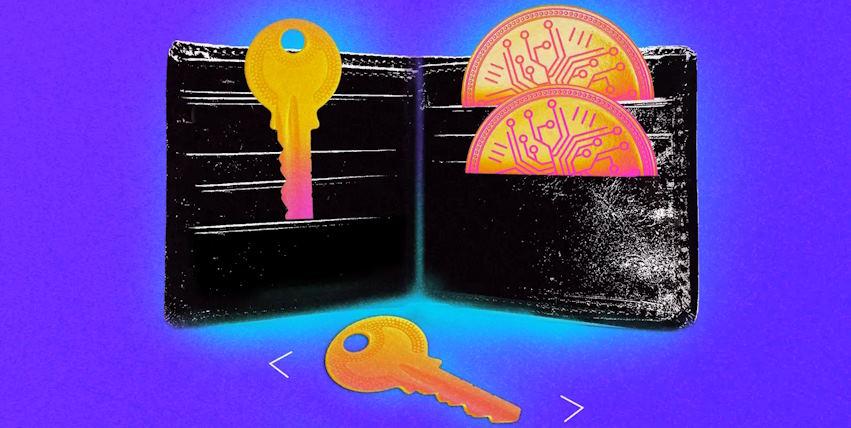As cryptocurrencies continue to gain prominence in the digital landscape, the need for secure storage solutions has become increasingly vital. Among the various types of wallets available, cold wallets have emerged as the go-to choice for safeguarding digital assets against malicious attacks. Cold wallets, which store cryptocurrency offline, have evolved significantly over time, adapting to the ever-changing threat landscape and the growing demand for advanced security features.
Intermediate Cold Wallets: Enhanced Security Measures
Need for improved security in an evolving crypto landscape
In the rapidly evolving world of cryptocurrencies, the need for enhanced security measures has become paramount. As the value and popularity of digital assets continue to surge, so does the sophistication of cyber threats. To address these evolving challenges, intermediate cold wallets have emerged as a crucial line of defense for cryptocurrency investors and enthusiasts. These wallets offer advanced security features that go beyond the basic cold wallet functionalities, providing users with an extra layer of protection against potential vulnerabilities.
Types of intermediate cold wallets:
- Multi-signature wallets:
One prominent type of intermediate cold wallet is the multi-signature wallet. Unlike traditional wallets that rely on a single private key to authorize transactions, multi-signature wallets require multiple parties to sign off on transactions. This means that even if one private key is compromised, the funds remain secure as the attacker would need access to multiple keys. Multi-signature wallets significantly reduce the risk of unauthorized transactions and provide an added level of security.
- Shamir’s Secret Sharing-based wallets:
Another type of intermediate cold wallet is based on Shamir’s Secret Sharing. This innovative technology divides a private key into multiple shares, which can be distributed among different locations or individuals. This method ensures that no single entity possesses the complete private key. To access the funds, a predefined threshold of shares must be combined. Shamir’s Secret Sharing-based wallets offer robust protection against single points of failure and provide enhanced security against physical theft or loss.
Advanced security features of intermediate cold wallets:
- Multi-factor authentication:
Intermediate cold wallets often incorporate multi-factor authentication, requiring users to provide multiple forms of identification to access their funds. This could include a combination of passwords, biometric data (such as fingerprint or facial recognition), or hardware tokens. Multi-factor authentication adds an additional layer of protection against unauthorized access and minimizes the risk of password-related vulnerabilities.

- Hierarchical deterministic wallets:
Intermediate cold wallets may utilize hierarchical deterministic (HD) wallet technology. HD wallets generate a hierarchical tree-like structure of public and private keys derived from a single master seed. This feature eliminates the need to regularly back up individual key pairs and simplifies wallet management. HD wallets offer enhanced security by allowing users to generate new addresses for each transaction, reducing the risk of address reuse and potential privacy breaches.
- Use of hardware security modules (HSMs):
Intermediate cold wallets may integrate hardware security modules (HSMs) to provide robust protection for private keys. HSMs are dedicated physical devices designed to securely generate, store, and manage cryptographic keys. By leveraging HSMs, intermediate cold wallets ensure that sensitive operations are performed within a tamper-resistant environment, safeguarding against attacks such as key extraction or manipulation.
Advanced Cold Wallets: Cutting-Edge Security Innovations
Rising threats and the demand for next-level security
With the increasing value and adoption of cryptocurrencies, the digital landscape has witnessed a surge in sophisticated cyber threats. To combat these evolving risks, advanced cold wallets have emerged, integrating cutting-edge security innovations to provide next-level protection for digital assets. These wallets go beyond the features offered by basic and intermediate cold wallets, addressing the specific challenges posed by modern-day threats. As the demand for robust security solutions continues to rise, advanced cold wallets have become essential tools for individuals and institutions seeking unparalleled protection for their cryptocurrency holdings.
Types of advanced cold wallets:
- Air-gapped wallets:
Air-gapped wallets are at the forefront of advanced cold wallet technology. These wallets are completely isolated from any network connection, ensuring that no external communication is possible. By removing the ability for remote attacks or data breaches, air-gapped wallets offer an unparalleled level of security. Transactions are typically signed offline and then transferred securely to the network through a separate device. Air-gapped wallets provide a strong defense against online threats, such as hacking, malware, and remote attacks.
- Quantum-resistant wallets:
As quantum computing advances, traditional cryptographic algorithms may become vulnerable to powerful quantum attacks. Quantum-resistant wallets, also known as post-quantum wallets, address this emerging threat by utilizing cryptographic algorithms resistant to quantum attacks. These advanced wallets ensure that the cryptographic keys and signatures remain secure even in the face of future quantum computing advancements. By adopting quantum-resistant algorithms, these wallets future-proof digital asset protection.
State-of-the-art security features of advanced cold wallets:
 Air-gapping and physical isolation:
Air-gapping and physical isolation:
The primary security feature of air-gapped wallets is their physical isolation from any network connectivity. This ensures that sensitive operations, such as private key generation and transaction signing, are performed in an offline environment. By eliminating any potential online attack vectors, air-gapped wallets provide unparalleled protection against remote hacking attempts.
- Post-quantum cryptography:
Quantum-resistant wallets employ cryptographic algorithms that are designed to withstand attacks from quantum computers. These algorithms are resistant to the computational power of quantum computers, ensuring the security and integrity of digital assets. By adopting post-quantum cryptography, these wallets mitigate the risk of future attacks that leverage quantum computing advancements.
- Biometric authentication and anti-tampering mechanisms:
Advanced cold wallets often integrate biometric authentication features, such as fingerprint or facial recognition, to ensure that only authorized individuals can access the funds. Additionally, these wallets employ anti-tampering mechanisms, such as secure elements and tamper-evident packaging, to detect and prevent physical attacks on the device. These measures enhance the overall security of the wallet, protecting against unauthorized access and physical tampering.
